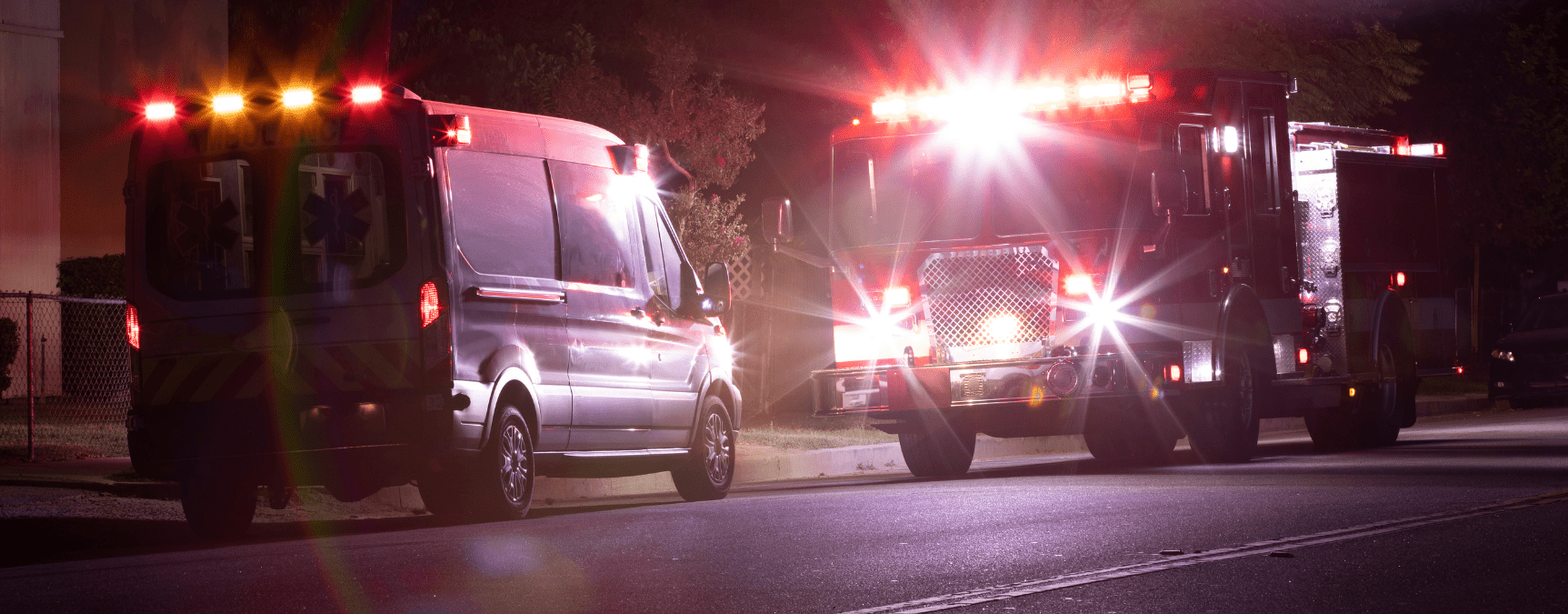A tornado. A flood. A virus. An active shooter. These are just some examples in which a proper emergency response plan for corporations can make all the difference in keeping employees safe, protecting your assets, and helping maintain business operations.
What is an Emergency Response Plan and Why Do You Need One?
Before we get into the details of an emergency response plan, let’s first define it. Often referred to as an EAP, an “emergency action plan” or “emergency response plan” is a written set of instructions on how your organization will immediately respond to two general types of workplace emergencies: environmental-based (fires, natural disasters, floods, etc.) or person-based (explosions, workplace violence, etc.).
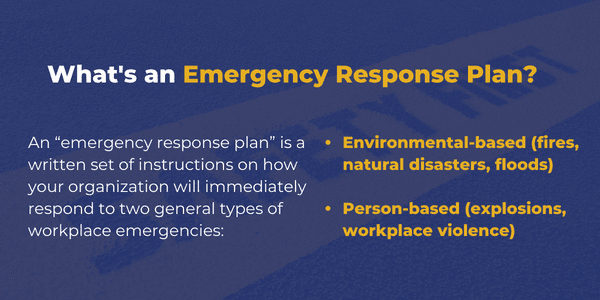
This plan should be available to all of your staff at any given time and will include emergency contacts, employee behaviors, and how to mitigate the event. Your main priorities should be preventing injuries, asset or property damage, resolving the incident, and maintaining business operations. How you respond to an emergency will not only protect your brand reputation and public image it will also save lives.
Who Should be Involved in Your Corporate Emergency Response Plan?
Your emergency disaster team should be composed of both internal employees, which essentially includes everyone in the organization to some extent, as well as external support from local, regional, and even federal law enforcement and first responders.
Internal Employees
Regardless of your corporation’s size, it’s critical in your emergency response plan to have a mix of leaders from all departments along with managers or supervisors involved. Those at the executive and managerial levels are already inherently looked to as your organization’s leaders, so it’s only natural for them to be part of your core emergency response team. They will be able to identify team members and job duties, and may serve as main coordinators.
OSHA recommends one “evacuation warden” for every 20 employees on top of your other coordinators. Clearly, not every employee will have a major responsibility in a corporate emergency, but ensuring they are – at a minimum – on board with your plan strengthens your response.
First Responders
First responders will likely be the ones first arriving on the scene to provide support, and your geographic area may dictate who among these groups is most essential. For example, your area may be more prone to wildfires, so the fire department may be most applicable in that scenario.
Not only should these persons have a clear layout of your building with entrances and exits but they should also understand your business’s indoor security. They may also need access control, two-way communications, and knowledge of the whereabouts of medical supplies and fire extinguishers.
Whole Community
FEMA takes emergency response plans and management to another level by suggesting the concept of a whole community approach. Essentially combining the aforementioned groups with local, state, and federal leaders and agencies, these guidelines are meant to emphasize that government alone isn’t necessarily the best overall solution to emergencies.
Though more intended for larger natural or manmade disasters in vulnerable areas versus corporate settings, FEMA’s concepts of preparedness, security, and recovery overlap in numerous ways to your corporate emergency response plan.
Families
In an emergency where staff might be in jeopardy, part of your emergency response should be a contact plan with families that efficiently lets them know the status of their loved ones.
In the unfortunate scenario of a critical injury, do you have counselors available to speak to family members as soon as possible? Are you able to keep their privacy from the media? Do you have a plan in place to help them recover over a long period of time, both psychologically and financially if needed?
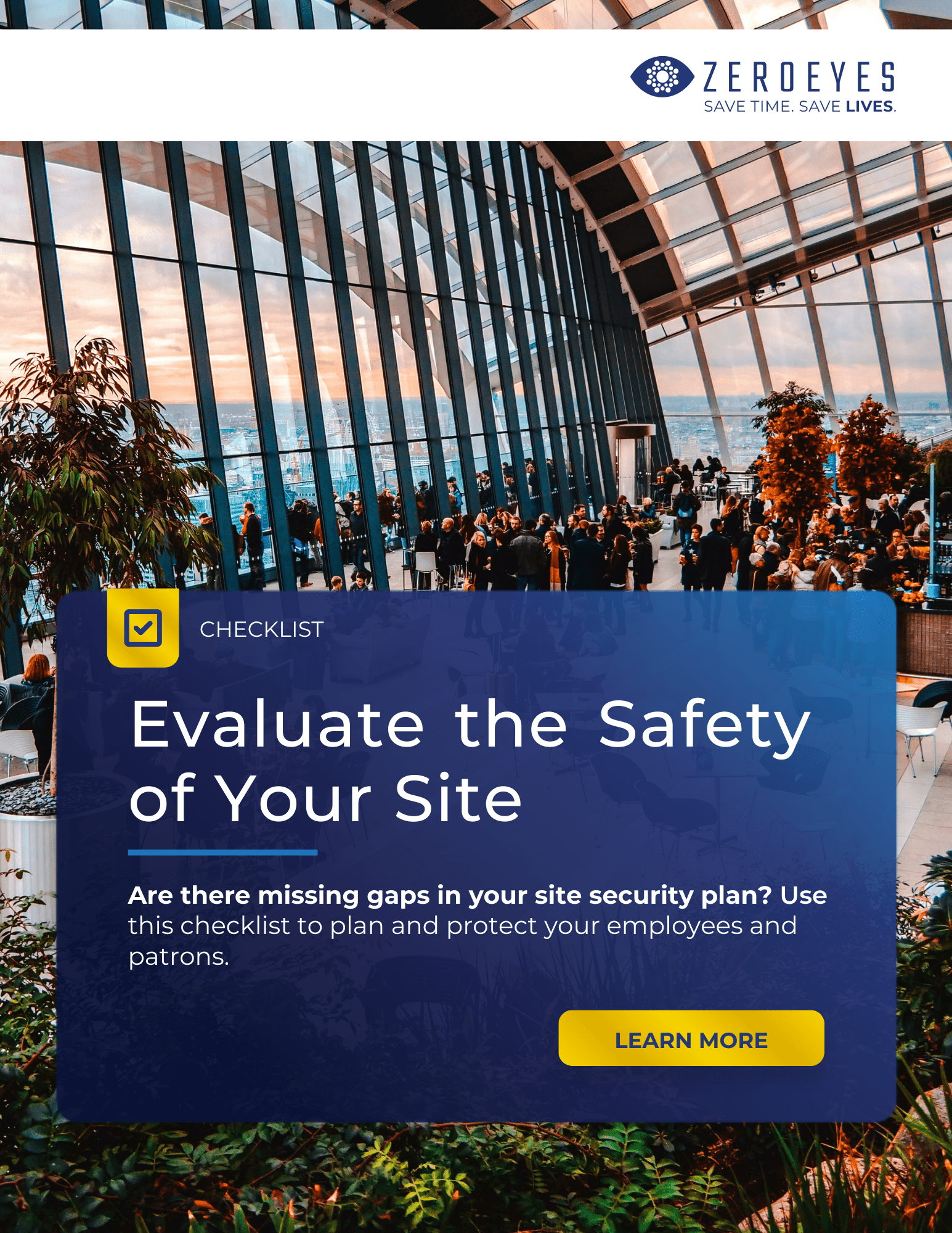
Evaluate Your Site's Security Plan
Download our safety checklist to check for potential vulnerabilities and missing gaps in your site’s security plan.
What Should be Part of Your Corporate Emergency Response Plan?
Communication
While we’ve already touched on the importance of communication during an emergency, let’s dive a little deeper into some tips your organization may consider. Because your business is possibly connected to so many audiences, not only is communication an emergency priority, but it should also be tailored to those groups. In general, they will be concerned with how your emergency will impact them.
First and foremost, you should have the best way to contact your employees, especially since you may not immediately know who may be in the most harm’s way. Do you have all their phone numbers for a text message with backup email? (Keep their contact information updated routinely.) Do you have an efficient series of messages that can be processed in seconds when time may be of the essence? In a true emergency, it’s recommended to have multiple sensory alerts, such as lights or alarms for reinforcement.
Your communication plan should be efficient for all involved, including first responders, local officials, family members, and any impacted customers or business relationships. Be sure all messages have already been thought through, established, and even automated according to your emergency scenario so you are not trying to troubleshoot communication in a crisis, which could cause confusion and amplify a negative situation. Following a corporate emergency, make sure you account for every single member of your organization and their whereabouts.
And because you should’ve already established a communication hierarchy, you won’t have to assume someone contacted authorities in an emergency.
Evacuation
While some emergencies may allow staff to stay in place, more serious or life-threatening emergencies may require staff to evacuate the premises or to designated safe zones—whether in your business or outside of it.
Just as taught in school, safe and orderly evacuation is essential to mitigating the scenario and not causing any more panic than already exists. Your already-established team of emergency leaders should have a good idea of where employees are at any given time and also know whether you have employees with mobility issues who require additional assistance getting to a safe location. Once your employees have reached their specified location, you can perform a roll call.
Business Continuity
Among all the critical factors your organization may deal with during an emergency, do you have a way to keep operations running with minimal impact? Your clients or customers will also want to know about your service availability in relation to an emergency.
Make a list of personnel or departments who are the most critical to your operations and how you would overcome a sudden disruption of services and keep business as normal as possible until everyone is back to normal. Where are the gaps? What is your technology backup plan? Is there a particular season where business would be impacted the most?
Training
The best rehearsals for an emergency involved all the most valuable people involved in your team for the worst-case scenarios, including local government officials. Before training and exercise, it’s time to reestablish roles and responsibilities. This is also another opportunity to take notes and get everyone familiar with the building layouts and designated safe zones.
Aftermath Regroup
In the aftermath of a corporate emergency, it’s time to regroup and assess the incident. What worked, and what was a challenge? What could you do better next time? It is your responsibility to properly document everything. A regroup, or even practice regroup, should be a regular cadence of reviewing and updating your emergency response plan.
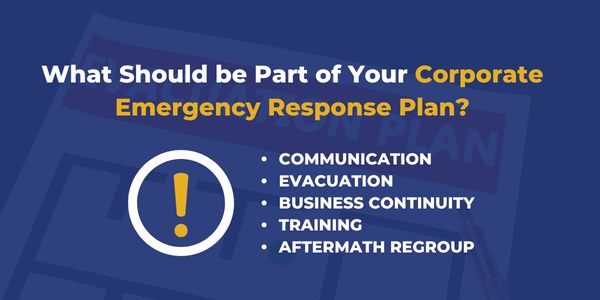
How to Make A.I. Gun Detection Part of Your Emergency Response Plan
According to the National Institute of Justice, 30% of all mass shootings occur at the corporate workplace, making it the #1 location of public mass shootings. To put that percentage into perspective, the location with the second-highest mass shooting incidents are retail establishments, which account for 17%.
For employers who understand the Duty of Care law, which means you must uphold reasonable care that avoids potential staff injuries, such mass shooting data supports the timely need to evaluate or improve your emergency response planning. All publicly-accessible locations in the U.S., from office buildings to public spaces, are bound by Duty of Care laws. The absence of good faith preparations could lead to severe liability concerns.
To maximize your business’s emergency response plan, consider how you could prevent one in the first place. As part of your early emergency response planning, you should be able to identify the business locations where your security or surveillance may be most vulnerable. From that list, determine what measures may address your weak points.
A.I. Commercial Threat Detection Solution
ZeroEyes is a proactive, complementary solution to your emergency response plan that both mitigates liabilities and supports your Duty of Care responsibilities. If a weapon is brandished within the surveillance of our A.I. gun detection for commercial security, your organization’s emergency response plan is strengthened by:
- Decreasing response times
- Leading people to evacuation points
- Directing first responders to precise locations
- Marshaling people to safe zones
- Locking down buildings
We work with corporations both large and small across virtually every industry. From America’s largest auto OEMs like Subaru of America to healthcare, retail, casinos, and more, ZeroEyes is a proven technology approach to true, actionable information that can help protect staff and customers in an emergency.
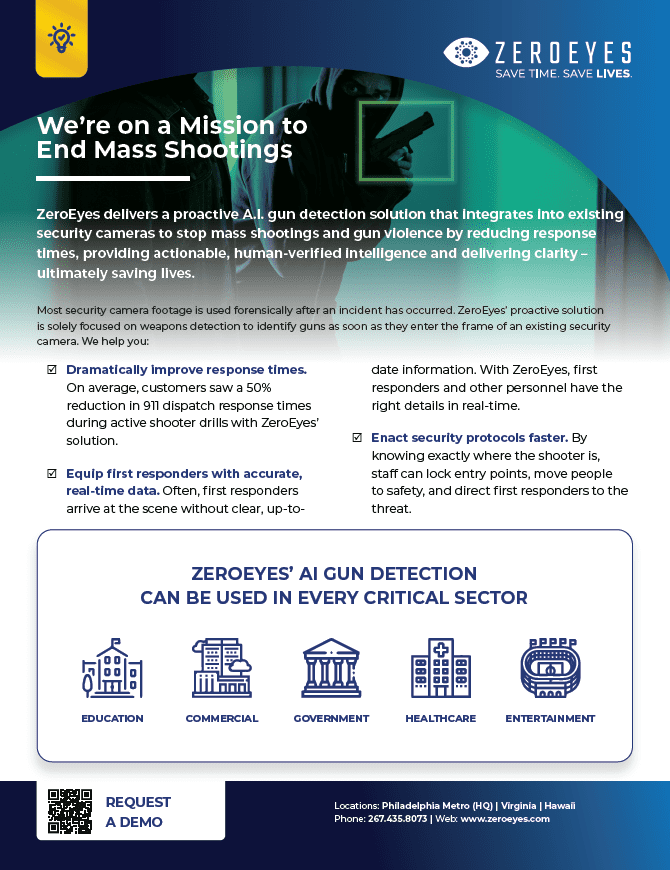
Discover How Proactive Gun Detection Technology Can Make Your Facilities Safer
Download our brochure to learn more about how ZeroEyes works, what sectors we are used in, and what sets us apart from other security solutions.
DOWNLOAD NOW
Remember: A Corporate Emergency Response Plan is a Living Document
Emergency response planning in your corporation or business environment does not stop. It’s an ongoing process that will evolve over time based on the learnings from your unique setting and you should consider it a living document.
While your corporate emergency response plan may be similar in concept to other organizations, factors like your size, building layout, personnel, assets, and other factors will make it unique. A templated emergency response plan may be reasonable as a starting point, but is not a long-term solution. No matter how safe and prepared you perceive your organization to be from an emergency, no organization is immune to potential fallout.
To find out how to protect your employees and businesses from the threat of an active shooter, download our free checklist today.
Disclaimer: There are several emergency response plans available and depending on your location and size, may have certain requirements. This blog is intended as general information and not as legal or medical advice.
